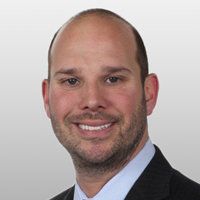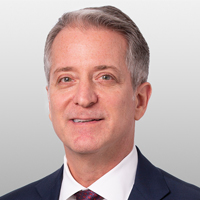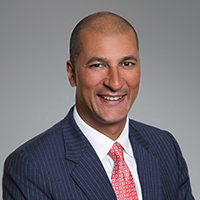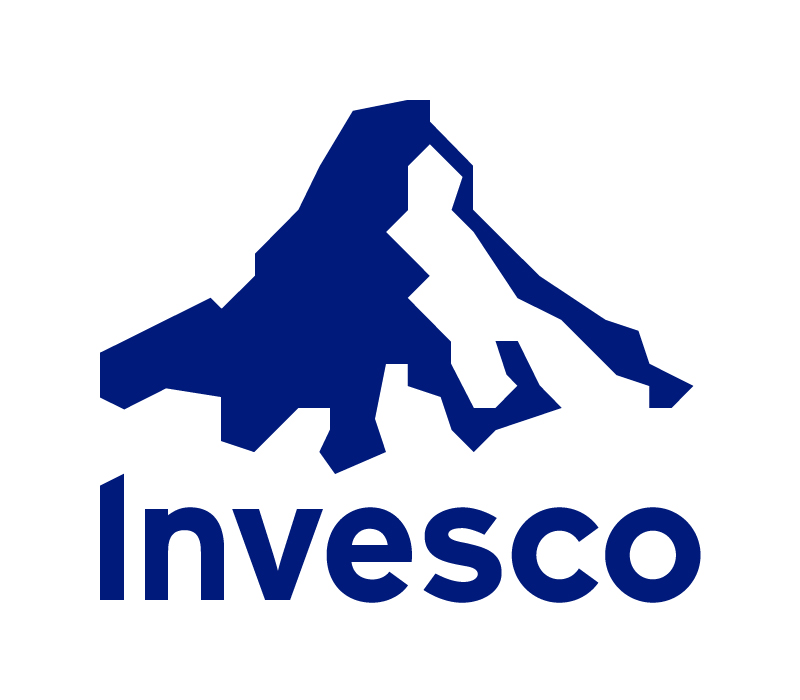Caroline Cakebread:
Good afternoon everyone, and thanks for joining us. I’d like to welcome you to this week’s live chat, hosted by the Canadian Leadership Congress. Today, we’re addressing direct lending, how it’s evolved, and how asset owners are using it in their portfolios. And here to talk about this with me, I have Scott Baskind, who’s chief investment officer and head of Invesco private credit, and Ron Kantowitz, who’s managing director and head of private debt. Welcome to both of you.
Ron Kantowitz:
Thank you.
Scott Baskind:
Thank you.
Caroline Cakebread:
Great. Okay. Well, let me kick off my first question. There’s a lot going on in the macro environment, to say the least. How’s that impacting the credit space right now? And what’s your biggest concern? Scott, you want to address that?
Scott Baskind:
Sure. So, the macro environment is really one of the more interesting environments that we’ve been in for many years. The confluence of both the more recent inflationary environment that we’re in—the supply chain, disruption, the Fed’s interest rate policy, and obviously becoming much more hawkish in nature—has caused tremendous angst among investors, if you will. Maybe if we peel that back a little bit to talk about the direct impact to corporates from an impact perspective.
The inflationary environment really started in 2021 around supply chain disruptions, and the ability of many of the underlying corporate operators that we invest in, do due diligence on and analyze, the influence on getting supplies and being able to produce components and produce outputs for consumers, became quite challenged. And that caused, I would say, a ripple effect across the economy very specific to certain industries, and very impactful now to the consumer in the auto space. So the technology arenas, if you will.
Layer on top of that more of an inflationary environment that the supply chain started around cost pressures. And we’re seeing that from labour cost increases to goods and services. And, clearly, once again, the consumer is bearing the brunt of a lot of that.
Interestingly enough, many of the underlying corporate entities that we lend capital to have been in a fairly strong perspective in terms of their ability to pass through those costs. Some are lagging, and that’s a consideration that Ron can certainly talk to in terms of direct impact on many of the corporations, if you will. But that confluence of cost pressures, the ability to produce goods and services, has really been hamstrung by what’s going on in the global economy.
And then, clearly, the geopolitical and the unfortunate circumstances around the conflict in the Ukraine have added to significant pressures, putting side for the moment the humanitarian disaster, but the energy crisis in terms of increased energy prices, supply, potentially supply disruptions throughout Europe. We see those impacts impacting the European economies to a greater extent than the domestic U.S. economy. However, the economies, in general, have become much more global in nature. So there are impacts that we are seeing across the board.
Caroline Cakebread:
Yeah, there’s a lot of moving parts there. Let’s look a little more closely about the private space, the spectrum of choice right in now in private credit. In your conversations with asset owners, what are they most focused on, and why?
Scott Baskind:
Yeah, so I think there’s really two key themes, if you will, that investors have been critically focused on for a number of years. And that’s been dominated by income-oriented strategies, if you will. And credit really plays a critical role in providing higher income/outcomes for clients on a global basis. And coming through the financial crisis—which seems like a lifetime ago, if you will—we’ve been in a zero to negative interest rate environment in the real global markets, and asset allocators have been challenged with the ability to produce positive returns in many cases. So income orientation has been really critical from a thematic perspective.
More recently, given the inflationary environment that we’ve ventured into, and the rate environment and the expectations for many rate hikes throughout 2022 and into ’23, duration has become really critical in terms of both capital protection in short-duration products, short-duration asset classes. As well as the opportunity to perhaps even enhance the income orientation of floating rate credit investments.
So when we think about those opportunities, lending in the private credit space is really characterized by three key considerations. One is senior and capital structure. Two is secured, meaning secured by all the underlying assets of a corporate entity, and then floating rate. So that floating rate aspect of the base rate resets every several months. In general, every three months, which really causes the loan asset class, inclusive of direct lending, to be viewed as a very short-duration play on the corporate markets. The ability to combine that with that high-income orientation has just been a real confluence of flows into the credit space over the last many years, and is really driving the opportunities, if you will, in terms of lending to both sponsor-backed and non-sponsor-backed transactions.
Caroline Cakebread:
Yeah, that’s great context. And I want to pick up on the topic of lending and direct lending specifically. Ron, talk to me a bit about how the direct lending asset class has evolved, and why asset owners are interested in it right now.
Ron Kantowitz:
Sure, sure. Well, it’s interesting. When we talk about evolution of the asset class, I think it’s important to recognize that this is not a new asset class. Middle-market companies have always had a need for capital to support their businesses and their growth plans. What’s changed, or evolved, is really who are the providers of that capital, and what do the debt solutions look like? Historically, banks have been the domino providers of debt capital, as we know. Post the Great Recession with all the changes in the regulatory side, it became more difficult for banks to be able to address these companies’ needs. And so as markets tend to do, we saw the market transition. We originally used to refer to it as shadow banking and then non-banking, and now today, we refer to it as direct lending. And direct lending is really the solution for middle-market companies, and, in many respects, provides greater flexibility and more bespoke solutions than what these middle-market companies can today receive from banks.
And I think it’s interesting, because the market does continue to grow and evolve. If you look at what direct lending looked like five years ago, it was an asset class predominantly focused in the middle market. Today, it’s not uncommon to see billion-dollar direct lending deals getting done. And the reason for this, as the markets transitioned away from banks, is it’s created access to an asset class for institutional investors that they weren’t able to tap into before. And it’s a compelling asset class, as Scott referenced, and this drives continuous inflows into this space, and it just continues to increase the overall ability and access that this market has.
And look, from our investors’ perspectives, as I mentioned and as we touched on, this is a compelling asset class. It’s a large asset class, and we know on the demand side there’s continued growth and opportunity. Seventy-five percent of the opportunity lending comes from private equity firms. And what we know with private equity continues to amass record sums of capital year in and year out, and they need our direct lending capital to be able to execute their strategies. And, as we touched on, it’s typically a senior secured asset class. So there’s a fundamental inherent risk mitigation associated with it. It’s a floating rate asset class, so, in rising rate environments, it provides a natural hedge, and certainly front of mind for everyone today is the inflation risks. And we know floating rate assets tend to outperform in rising rate environments.
And I think, importantly, when you look at direct lending specifically, and you contrast it with the broader debt and equity markets, what you also tend to see is lower volatility and lower correlation with these other asset classes. So, from our investors’ perspectives, it offers, in some cases, some really nice diversification benefits.
And I think lastly, when you look at the asset class, just at the asset level, it has traditionally delivered eight percent or better on levered returns. And so from our investors’ perspective, it checks all the boxes or many of the boxes that they’re concerned about and they’re looking for, particularly environments where they’re trying to navigate increased volatility and uncertainty.
Caroline Cakebread:
Yeah. Those are excellent points. When I think about all the background and context that Scott shared around inflation and interest rates and conflict in the world, what are the opportunities you’re seeing right now? Where are you focused?
Ron Kantowitz:
Yeah, no. That’s a great question. So following on from my earlier comment, as this market has grown, you can start to see real segmentation within direct lending, and each segment has different risk/return characteristics associated with it.
I can tell you, from our perspective, we tend to focus on the segment of direct lending we refer to as the core middle market, which I would define as companies with enterprise values less than $750 million in size. This is the traditional part of direct lending that we’ve typically seen before of the market started to widen out. And we focus in this particular segment of the market because, historically, it’s demonstrated some of the most consistent returns in performance, and I think equally important—when we compare it with some of the other opportunities within direct lending—it offers some of the most attractive yields. But, equally important, some of the strongest credit protections that you could find in the market.
And so from a risk/return perspective, we think this is really a compelling component within direct lending, where we think we see some of the best opportunities. And as we think about orienting, and again, there’s some themes you’ll hear over the course of our discussion. We skew towards senior secured. We like to be at the top of the cap structure. We want to have that security. It mitigates risk. We’re a private equity-oriented direct lending strategy. We want to work with world-class private equity firms that we know have experience. And, as we think about the opportunity set from our perspective, if we do our work and we identify what we think is a great opportunity, and we’re aligning with some of the best equity investors in the world, and they’re willing to contribute 50 percent of the value of those businesses and first loss equity, from a risk perspective, we think we’re in a pretty strong position. That’s how we pursue this market.
Caroline Cakebread:
Okay. So obviously not all strategies and approaches are created equal. What do you need to be successful in this space? Scott, do you want to talk to us a bit about that?
Scott Baskind:
Sure, happy to. I think the size and scale, from an organizational perspective, is probably the most critical from a relationship and a partnership perspective, because investors and asset owners are truly focused on deploying capital in strategies where they have confidence in both that deployment schedule, if you will, and pace. But also being able to achieve that risk/return profile that they’re looking for within that asset allocation.
So partnering with managers and investment firms that can ultimately offer multiple solutions, that can help them think about asset allocation, that can be thought leaders, if you will. And within the private arena, access to unique deal flow is really one of the most critical components of that dialogue. So being able to create customized solutions, if you will, that allow those investors to achieve their underlying objectives is really critical in that partnership, if you will. So size of organization is really critical from an investment perspective. But also having the backbone of oversight and risk is absolutely critical, we think, to the long-term success and what asset owners [are] ultimately looking for in their investment partnerships. It’s not strictly about just the investment experience. It’s also about the onboarding, about the reporting, about the thought leadership that you’re able to provide. So all of this goes into the discussion and dialogue that ultimately leads towards outcomes.
Caroline Cakebread:
Okay. Did you want to add anything to that, Ron?
Ron Kantowitz:
Yeah, so I completely agree with everything Scott said. I guess if I were to drill down one more level, when I’m asked, when I advise our investors when you’re looking to pick your manager...Let me tell you what two things I think are most critical. And from our vantage point, we think there are two things where you have to have a differentiated and competitive approach, and it’s sourcing, and it’s diligence. And so marrying up with Scott’s earlier comment, when we think about sourcing, we’re leveraging the institutional relationships we have with world-class private equity firms. We’ve got 30 billion of capital today invested in the portfolio companies of more than 200 private equity firms. It creates a significant level of institutional relationship, which, ultimately, we believe drives sourcing advantage, and, ultimately, proprietary opportunities.
And then the other part of this is diligence. Let’s not lose sight of what this is. This is credit. This is investing. Diligence is critical. And our philosophy, when we think about direct lending, [is], it’s really very simple. We think it’s difficult to be successful as a direct lender if you’re a generalist. You have to have sector expertise. And I think here, for us, we leverage one of the largest private side sector teams in the market. And our philosophy is really simple. In every investment we make, we’re going to bring those sector experts on our diligence team. They’re going to be part of that process. And if we do that right, it’s going to drive a more efficient, more focused diligence, and that drives better outcomes for our clients. So when we think about it at the asset level, that’s how we think about what’s important as a direct lender.
Caroline Cakebread:
Okay. So what about ESG? That’s one of the topics we hear a lot, particularly for our viewers that are watching today. How do you integrate that into decision-making? Is it really difficult to do in the direct lending space?
Scott Baskind:
Yeah. So why don’t I take a crack at that first, and then Ron, jump in here.
Ron Kantowitz:
Absolutely.
Scott Baskind:
You really can’t get through a conversation without ESG being a critical component of it. And it’s a dialogue that really developed many years ago. And I think the thoughtful nature of thinking about how ESG risks can really help with a credit underwriting and diligence process that Ron mentioned. Many of the ESG considerations ultimately are credit risk. So when you think about governance, it’s something that we’ve been analyzing and working with all of the corporate entities for decades now around understanding their governance structure, understanding the risks involved when there’s not independence, when there’s not diversity. So all of these different components of governance have really been ingrained in the credit underwriting process for years.
I think what’s taken a really healthy shift in underwriting is around environmental and social considerations, if you will. And within the private universe, it’s even more difficult, if you will. Particularly as you start moving down the spectrum into small to mid-cap companies. The sophistication level, the resources are extremely different, and where they are on their journey is very different than in the public markets for large-cap companies. So what we try to do is we engage the companies. We try to educate them. We encourage them around disclosure, developing policies and procedures that are healthy to helping their organizations really create a story around where they’re going, where they are today, and where they’re going tomorrow. And when we’re working with companies, what we’re most focused on is baselining where companies are today. But really helping them develop that engagement level on a go-forward basis. So what are their expectations and where can they get to over the next one to three years, and then three to five years, if you will.
Because, ultimately, what we’re looking to do is to measure the company’s success, or lack thereof, on a go-forward basis. And I think from an institutional perspective, at Invesco, we have spent an enormous amount of time not just working with end investors, the asset owners, around what their needs are, but then taking that back to helping corporates both in the U.S. and throughout Europe around their journey, and really helping them change their behaviour, if you will. Both on disclosure and then from an operational standpoint, which we believe will ultimately lead towards much better outcomes for our client base. And that’s been something that’s quite rewarding. We’re really excited about that, and certainly we’ve built out a framework of analyzing each and every company that we are diligent in, and that we’re ultimately lending capital to. We will rate each and every investment that we undertake with a completely separate ESG rating that really helps us align where companies are, and then set forward that framework to helping them develop the future outcomes.
Caroline Cakebread:
Yeah. Ron, does that mirror the questions you’re getting from asset owners or some of the conversations you’re having?
Ron Kantowitz:
Yeah. It’s very interesting, because there’s a very different value proposition when you’re addressing ESG in the syndicated market with multi-billion-dollar issuers than when you’re going after the middle market. Multi-billion-dollar corporates have lots of resources and capabilities to address this, whereas if you’re dealing with a two or 300 million-dollar middle-market company, they may not have nearly the same resources or capability. But they don’t lack, or they have just as much interest and focus and desire. And so I think the value proposition, the way we think about it, we really have two objectives. Number one, we need to underwrite and evaluate these businesses against our ESG technology because we want to make sure we’re investing in the right companies. But I think echoing Scott’s point, the value add here for us is to help our management teams and our private equity firms think about where they have risks along the ESG continuum. And again, leveraging off this base of knowledge and experience we have, helping them think about actionable decisions they can take to improve that ESG profile.
Caroline Cakebread:
Great! Excellent! Well, thanks both of you for your comments. Great insights here today, and that wraps this week’s Monday Minute. Don’t forget to send us your questions and we’ll get right back to you with our speakers’ response. And we’ve got lots of exciting content and great interviews lined up this year that you’re not going to want to miss. So be sure to hit the Like and Subscribe buttons below, and visit us at www.leadershipcongress.ca to get our informative CLC newsletter. Thank you all for joining us, and see you next time. Thanks guys.
Ron Kantowitz:
Thank you.
Scott Baskind:
Thank you.






